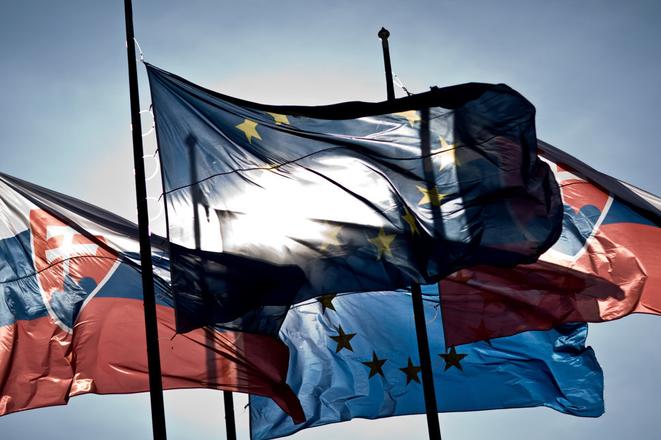Free access for Slovak companies to a common market of more than 450 million people, free movement of goods, labour, services and capital. These are, according to analysts, along with the money from EU funds, the biggest advantages of Slovakia’s 20-year membership in the European Union (EU). If we were not part of the EU, it would mean a lower gross domestic product (GDP) perhaps by up to a fifth and an economic situation on a par with Belarus, said analysts polled by the TASR newswire.
Slovakia could exist without EU membership, but the question is at what cost, noted Radovan Ďurana, an analyst at the Institute of Economic and Social Analysis (INESS).
“Based on some estimates, Slovakia’s GDP would be almost 20 percent lower if we were not in the single market,” said Ďurana.
Matej Horňák, an analyst at the Slovenská Sporiteľňa bank, added that without EU membership, Slovakia’s economic performance and living standards would lag behind the West significantly more than they do now.
The advantages of Slovakia’s EU membership are, in his view, linked to the benefits of a common European currency.
“The model of our colleagues from the Erste Group shows that Slovakia’s real GDP per capita is currently 16 percent higher than it would be without EU or eurozone membership,” Horňák explained.
He noted that one of the EU’s key tasks is to reduce regional disparities, which is the purpose of structural funds. Available data shows that by 2022, €24.8 billion will flow from the European Union to Slovakia. Over the same period, Slovakia contributed around €13.1 billion to the EU budget, making the country a net beneficiary of the funds.
Despite the persistent lag behind most other EU countries, analysts said that Slovakia has largely taken advantage of the opportunities offered by EU membership. For Slovakia’s economic success story, Horňák said, there is no alternative but to be firmly anchored with the developed Western world in the European Union.
Viliam Páleník, an economist at the Slovak Academy of Sciences, thinks that with the continuation of Mečiar’s policies, and thus without the EU, Slovakia could be compared to, for example, contemporary Belarus.

Problems with drawing EU funds persist
However, according to analysts, Slovakia’s problem remains the use of EU funds.



 (source: Sme archive)
(source: Sme archive)